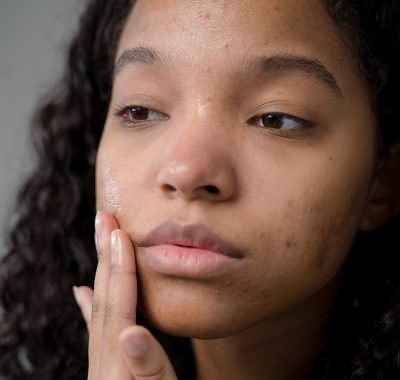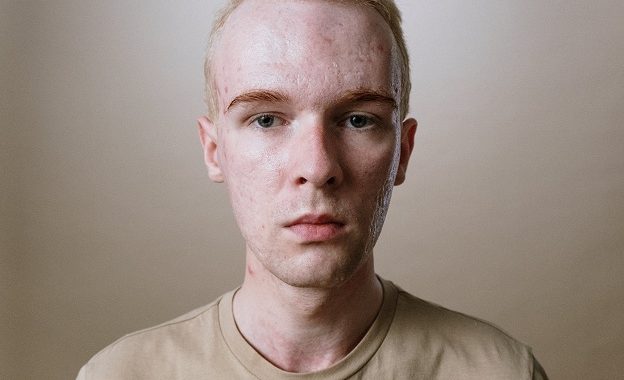
Acne scars can be a persistent and frustrating aftermath of acne breakouts, impacting one’s self-esteem and overall skin appearance. As individuals seek effective solutions for scar reduction, the combination of Sculptra and subcision has gained attention. In this article, we will delve into the details of Sculptra, subcision, and their role in addressing atrophic acne scars, all while exploring factors such as cost and showcasing Sculptra for acne scars before and after results.
Understanding Sculptra and Subcision
Sculptra, scientifically referred to as poly-L-lactic acid, stands out as a versatile and FDA-approved dermal filler that has revolutionized the field of dermatology. Unlike traditional fillers, Sculptra doesn’t merely provide immediate volume; it is designed to stimulate the body’s natural collagen production over time. Collagen, a fundamental protein in the skin, contributes to its elasticity and overall structural integrity. Sculptra’s unique attribute lies in its ability to act as a scaffold, encouraging neocollagenesis – the formation of new collagen fibers. By initiating this natural process, Sculptra addresses the root cause of volume loss and textural irregularities, yielding results that are not only rejuvenating but also authentically natural in appearance.
Subcision: A Surgical Approach to Atrophic Scars
Subcision complements Sculptra’s effects by targeting the physical structures that contribute to atrophic scars. This surgical technique involves the precise release of fibrous bands that tether the skin down, creating the depressions characteristic of atrophic scars. By carefully disrupting these fibrous connections, subcision aims to free the skin from its anchored position, allowing it to elevate and regain a smoother, more even surface. This procedure requires the skill and expertise of a qualified healthcare professional, emphasizing the importance of consulting with a trained dermatologist or plastic surgeon before opting for subcision.
The Synergy of Sculptra and Subcision in Atrophic Acne Scar Treatment:
The synergy between Sculptra and subcision presents a comprehensive approach to atrophic acne scars. Sculptra’s collagen-stimulating properties target the volume loss associated with these scars, addressing the underlying structural issues. Concurrently, subcision physically releases the tethers, allowing the skin to elevate and reduce the visible depressions. This combination creates a harmonized and multi-faceted strategy, offering patients a more holistic and effective solution for atrophic acne scars.
Clinical Considerations and Patient Selection:
While the combination of Sculptra and subcision shows promise, it is essential to consider individual factors such as skin type, scar severity, and overall health. The treatment plan should be tailored to meet the specific needs of each patient. Moreover, patients should be informed about potential side effects, downtime, and the gradual nature of the results. By discussing these aspects during the consultation process, healthcare professionals can ensure that individuals have realistic expectations and are well-prepared for the treatment journey.
In summary, the understanding of Sculptra and subcision as complementary treatments provides a nuanced perspective on addressing atrophic acne scars. As medical advancements continue to expand the horizons of dermatological interventions, the combination of these innovative approaches holds significant promise in enhancing both the structural and textural aspects of the skin affected by atrophic scars.
�
Mechanism of Action
At the core of Sculptra’s mechanism is its utilization of poly-L-lactic acid, a biocompatible and biodegradable substance that has demonstrated its safety and efficacy in dermatological applications. The treatment begins with the strategic injection of Sculptra into the targeted area. Once injected, poly-L-lactic acid serves as a bioabsorbable scaffold, initiating a cascade of biological responses within the skin.
The magic lies in the stimulation of neocollagenesis, a natural process triggered by the presence of poly-L-lactic acid. Neocollagenesis involves the generation of new collagen fibers, the essential protein responsible for skin elasticity and firmness. As Sculptra gradually breaks down within the body, it leaves behind a framework of enhanced collagen, contributing to the restoration of volume and the improvement of textural irregularities.
Subcision’s Tactical Approach to Fibrous Bands:
In contrast, subcision takes a more direct, surgical approach to atrophic acne scars by targeting the fibrous bands beneath the skin’s surface. These bands, also known as tethering bands, create depressions in the skin and contribute to the characteristic appearance of atrophic scars. During a subcision procedure, a specialized instrument is used to carefully release these bands, allowing the skin to detach from its anchored position.
This liberation of the skin is crucial in addressing both volume loss and textural irregularities. By physically releasing the fibrous bands, subcision enables the elevation of depressed scars, leading to a more even and smoother skin surface. The combination of Sculptra’s collagen-stimulating effects and subcision’s targeted release of fibrous bands creates a dynamic synergy that comprehensively addresses the multifaceted challenges posed by atrophic acne scars.
Holistic Approach to Atrophic Acne Scars:
Together, Sculptra and subcision form a holistic treatment strategy, simultaneously tackling the structural and textural aspects of atrophic acne scars. Sculptra’s ability to stimulate neocollagenesis provides a foundation for long-term improvements in volume and skin quality. Subcision, by releasing the restrictive fibrous bands, facilitates the elevation of depressed scars, contributing to a more uniform skin surface.
It is this combination of mechanisms that sets Sculptra and subcision apart as a nuanced and comprehensive solution for atrophic acne scars. As healthcare professionals strategically employ these treatments, patients may experience not only visible improvements in the contours of their skin but also a renewed sense of confidence and satisfaction in their appearance. As with any medical procedure, thorough consultation with a qualified professional is essential to determine the most appropriate approach based on individual characteristics and treatment goals.
Application in Atrophic Acne Scar Treatment
The combination of Sculptra and subcision represents a revolutionary and synergetic approach to addressing the complex challenges posed by atrophic acne scars. This dual-action strategy integrates the unique strengths of each treatment to create a comprehensive solution that goes beyond surface-level improvements.
- Sculptra’s Role in Volume Restoration: Sculptra, with its poly-L-lactic acid composition, takes center stage in the process of restoring volume to areas affected by atrophic scars. By acting as a scaffold, it initiates the stimulation of neocollagenesis, encouraging the natural production of collagen fibers. This collagen production gradually improves the skin’s structure, filling in depressions and enhancing overall volume. The results are not only aesthetically pleasing but also sustainable over time, contributing to a more youthful and rejuvenated appearance.
- Subcision’s Targeted Release of Scar Tissue: Complementing Sculptra’s volume-restoring properties, subcision focuses on the physical elements that contribute to atrophic scars. Fibrous bands beneath the skin create tethering, pulling the skin down and forming depressions. Subcision is a surgical technique that precisely releases these fibrous bands, liberating the skin from its anchored position. This strategic release allows the depressed scars to elevate, promoting a smoother and more even skin surface.
- Holistic Solution for Structural and Textural Issues: The combination of Sculptra and subcision ensures a holistic approach to atrophic acne scars by addressing both underlying structural issues and surface texture irregularities. Sculptra’s collagen-stimulating properties fortify the skin from within, enhancing its foundation and structure. Simultaneously, subcision provides a targeted release of scar tissue, allowing the skin to naturally elevate and smoothen, thus comprehensively addressing the textural aspects of atrophic scars.
- Long-term, Natural-Looking Results: One of the key advantages of the Sculptra and subcision combination is the promotion of long-term, natural-looking results. Sculptra’s gradual collagen synthesis ensures sustained improvements in volume, while subcision’s release of fibrous bands contributes to the longevity of surface-level enhancements. This combination minimizes the need for frequent touch-ups, providing patients with a more enduring solution to their atrophic acne scars.
In conclusion, the integration of Sculptra and subcision in atrophic acne scar treatment offers a nuanced and effective strategy. By simultaneously addressing both the structural and textural elements of scars, this comprehensive approach provides individuals with a transformative solution that goes beyond conventional treatments. The collaboration between these innovative techniques underscores the evolving landscape of dermatological interventions, emphasizing the importance of tailoring treatments to individual needs for optimal and long-lasting results.
�
Sculptra for Acne Scars Before and After
The before and after photos of patients who have undergone Sculptra treatments for acne scars stand as compelling visual testimonials to the efficacy of this innovative approach. These images provide a powerful narrative of the transformative journey individuals experience in their quest for improved skin texture and diminished scarring.
- Gradual Improvement Unveiled: The photographic evidence showcases the gradual but consistent improvement in the appearance of atrophic acne scars over the course of Sculptra treatments. Unlike instantaneously visible results often associated with traditional fillers, Sculptra’s mechanism of collagen stimulation means that improvements unfold gradually. Patients, through the before and after photos, witness a metamorphosis in their skin texture, highlighting the nuanced approach of Sculptra in addressing atrophic scars.
- Time-Dependent Results: The temporal aspect captured in these images reveals that Sculptra’s effects extend beyond the immediate post-treatment period. Patients typically observe the most noticeable changes in their skin as time elapses, underscoring the importance of patience in the pursuit of long-lasting and natural-looking outcomes. The visual timeline presented in before and after photos serves as a testament to the sustained impact Sculptra has on the skin’s collagen production and overall structure.
- Insights into Transformative Effects: Before and after photos not only document physical changes but also offer profound insights into the transformative effects of Sculptra on atrophic acne scars. The images capture the reduction in scar depth, improvement in skin texture, and the restoration of volume, providing a comprehensive overview of the treatment’s impact on both structural and textural aspects. These insights empower prospective patients with a visual understanding of what to anticipate during their own Sculptra journey.
- Personalized Testimonials: Each before and after photo tells a unique story, reflecting the individualized nature of Sculptra treatments. The variability in results underscores the importance of tailored treatment plans, considering factors such as scar severity, skin type, and overall health. Patients can draw inspiration and confidence from the diverse range of success stories depicted in these images, fostering a sense of hope and optimism about their own potential outcomes.
In summary, the before and after photos of Sculptra-treated acne scars serve as invaluable tools for both patients and practitioners. These visual testimonials not only substantiate the efficacy of Sculptra but also provide a realistic portrayal of the transformative journey individuals undergo. As the adage goes, a picture is worth a thousand words – in the realm of dermatology, these images encapsulate the tangible and positive impact Sculptra can have on the lives of those seeking to overcome the burden of atrophic acne scars.
The Treatment Process and Sculptra Cost
The journey towards addressing atrophic acne scars through the combined treatment of Sculptra injections and subcision is a carefully orchestrated process carried out by qualified healthcare professionals. Understanding the nuances of this treatment journey, from the number of sessions required to the associated costs, is crucial for individuals seeking to embark on this transformative experience.
- Series of Sculptra Injections: The treatment typically commences with a series of Sculptra injections administered by a skilled healthcare professional. These injections strategically introduce poly-L-lactic acid into the targeted areas affected by atrophic scars. The number of sessions varies based on individual factors such as scar severity, skin condition, and the desired outcome. The injections serve as the catalyst for neocollagenesis, initiating the gradual transformation of the skin’s structure.
- Subcision Sessions for Precision: Interspersed with Sculptra injections, subcision sessions are performed to address the physical components of atrophic scars. A qualified professional undertakes this surgical technique, releasing the fibrous bands beneath the skin. This targeted intervention allows for the elevation of depressed scars, contributing to a smoother and more even skin surface. The integration of subcision enhances the overall effectiveness of the treatment, providing a synergistic approach to both structural and textural improvements.
- Individualized Treatment Plans: The number of sessions required for Sculptra injections and subcision is not a one-size-fits-all formula. The severity of the scars, the individual’s response to treatment, and the healthcare provider’s assessment guide the formulation of a personalized treatment plan. This tailored approach ensures that each patient receives the optimal number of sessions needed to achieve the desired results.
Understanding the Costs of Sculptra Treatments:
While the transformative potential of Sculptra and subcision is evident, the cost of these treatments can vary depending on several factors. During the consultation phase, individuals are encouraged to discuss pricing details with their healthcare provider. The cost of Sculptra treatments is influenced by factors such as the number of sessions required, the volume of Sculptra used per session, and the geographic location of the healthcare facility.
- Consultation Phase Importance: The consultation phase is a pivotal step where individuals can openly discuss their goals, concerns, and budgetary considerations with their healthcare provider. It is during this phase that the healthcare professional can assess the extent of the scarring, recommend an appropriate treatment plan, and provide a comprehensive understanding of the associated costs.
- Variable Costs and Transparency: Transparency regarding the costs associated with Sculptra treatments is crucial for informed decision-making. Variable costs may include the professional fees, the cost of Sculptra per vial, and any additional fees related to the subcision procedure. Healthcare providers typically strive to offer transparent pricing structures, enabling patients to plan their investment in these transformative treatments effectively.
In conclusion, the combined treatment process involving Sculptra injections and subcision sessions is a dynamic and personalized journey toward addressing atrophic acne scars. The number of sessions and associated costs are influenced by individual factors, emphasizing the importance of a comprehensive consultation with a qualified healthcare professional. This collaborative approach ensures that patients are well-informed, setting the stage for a successful and satisfying experience on the path to scar reduction and skin rejuvenation.
Results and Maintenance
Sculptra distinguishes itself from traditional fillers with its unique timeline for results. Unlike immediate outcomes, Sculptra’s effects unfold gradually over several weeks as collagen production increases. Patients observe a natural and progressive improvement in the appearance of atrophic acne scars.
The longevity of these results is noteworthy, with effects that can last up to two years or more. However, to sustain the desired outcome, maintenance treatments may be recommended, ensuring a continued and enduring enhancement of the skin’s texture and volume.
Considerations and Limitations
While the combination of Sculptra and subcision holds promise for improving atrophic acne scars, individual responses can vary. Patients should be mindful of potential side effects and take into account factors such as their skin condition, the severity of scars, and the overall cost of the combined treatment.
For those prioritizing immediate results, alternative procedures like laser therapy or chemical peels may be considered as part of the decision-making process. A thorough consultation with a healthcare professional is essential to determine the most suitable approach based on individual circumstances and treatment goals.
Conclusion
The combination of Sculptra and subcision offers a promising avenue for individuals struggling with atrophic acne scars. The gradual improvement, supported by before and after images, underscores the transformative potential of these treatments.
Before embarking on this journey, consult with a qualified dermatologist or plastic surgeon to explore the most suitable approach for your unique case, factoring in considerations such as cost and individual response.
Further Reading:
The Best Treatments To Get Rid of Acne Scars
ACNE SCAR TREATMENT PROCEDURES
FAQs:
Which filler is best for acne scars?
Sculptra is often considered effective for treating atrophic acne scars. Unlike traditional fillers, Sculptra stimulates collagen production, addressing both volume loss and textural irregularities. Its gradual results can last up to two years or more. However, individual responses vary, and consultation with a healthcare professional is essential to determine the best filler based on specific scar characteristics and patient goals.
How much is Sculptra for acne scars?
The cost of Sculptra for acne scars varies depending on factors such as the number of sessions required, the volume of Sculptra used, and geographic location. During the consultation phase, patients should discuss pricing details with their healthcare provider to gain a comprehensive understanding of the associated costs. Transparent discussions in the consultation allow individuals to plan and budget effectively for this transformative treatment.
What permanently gets rid of acne scars?
While no treatment guarantees permanent removal, laser treatments, microneedling, and chemical peels can significantly improve the appearance of acne scars. Surgical options like subcision and dermabrasion may offer long-lasting results. However, individual responses vary, and multiple sessions may be needed. Consultation with a dermatologist or plastic surgeon is crucial to determine the most suitable and effective treatment based on the type and severity of acne scars.
How do you break up acne scar tissue?
Subcision is a common method to break up acne scar tissue. In this procedure, a dermatologist uses a needle or cannula to release fibrous bands beneath the skin, allowing the scar tissue to elevate. Other treatments like laser therapy and microneedling can also stimulate collagen production, helping to break down scar tissue over time. The choice of treatment depends on the type and severity of scars, and consultation with a healthcare professional is crucial to determine the most effective approach.
Can Sculptra for acne scars truly showcase its effectiveness through before-and-after photos?
Yes, before-and-after photos of Sculptra-treated acne scars provide compelling visual evidence of the treatment’s transformative impact. These images depict the gradual improvement in scar appearance, highlighting the collagen-stimulating effects of Sculptra over time. Viewing these photos allows prospective patients to gain insights into the potential outcomes and assess whether Sculptra aligns with their expectations for atrophic acne scar improvement.
What are people saying about Sculptra for acne scars on Reddit?
Reddit users have shared diverse experiences with Sculptra for acne scars, with some praising its collagen-stimulating effects and gradual results. Discussions highlight individual responses, emphasizing the importance of consulting with a healthcare professional for personalized insights. While some users appreciate the transformative outcomes, it’s crucial to consider factors such as treatment cost and potential side effects. Reddit serves as a valuable platform for sharing perspectives on Sculptra, providing a community-driven resource for those considering this treatment for acne scars.



